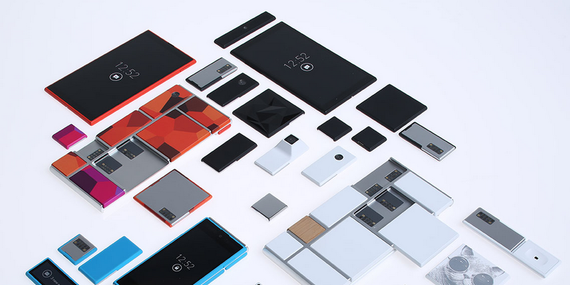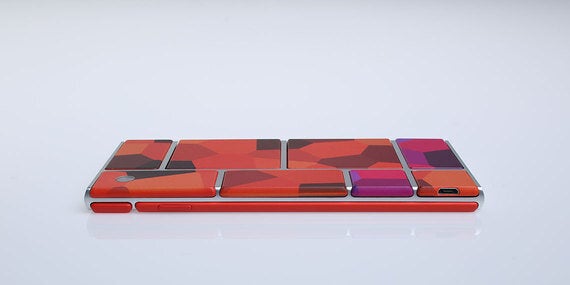

These days the only way to personalise your phone is by hiding its svelte, elegantly designed chassis under a slice of cheap plastic you got off eBay. But it wasn't always this way. Whilst the mobile phones of yesteryear (early 2000s, in tech time) would only let you swap out the fascia, keyboard and battery, it's more than the sealed, unibody shells housing immutable assortments of hardware we have now. However, a project currently underway at Google hopes to take customising your smartphone to the other extreme.
Project Ara was launched last year by then Google-owned Motorola Mobility, collaborating with Phonebloks who had demonstrated a modular phone concept in September. Though Motorola has since been sold to Lenovo, Google retained the Advanced Technologies and Products (ATAP) group that have been working to turn the concept into a reality.
The idea is that you would get a specialised smartphone endoskeleton and buy each part separately from third-party manufacturers to effectively "build" a bespoke handset. The endoskeleton is designed to allow component modules to be easily fitted into the frame and swapped out to fix faulty parts or take advantage of improved hardware without replacing the entire device.
The logic behind Project Ara is pretty solid when you consider how fragile the current crop of smartphones are. A poll by MobileInsurance.co.uk last year suggests that 25% of iPhone owners continue to use their device with a broken screen, reasoning that they couldn't afford to replace it or were unable to easily repair it.
Having a phone where a broken screen can be swapped out for a fresh one as casually as you'd change batteries (back when user-replaceable batteries were a thing) makes sense, especially if it means no more lacerating your face whenever you took a call. Plus, rather than waiting out your contract with a slow, worn-down or just plain outdated handset, you could replace and upgrade an Ara phone's features on a whim.
Project head Paul Eremenko is confident they can create a phone with mainstream appeal, rather than letting Ara languish in the hands of hobbyists. He told The Verge, "What we don't want to create is the consummate nerd toy that doesn't have a market outside of Silicon Valley".
Google hopes to kick-start a module market for third-party manufacturers, having already released a Module Developers Kit (MDK) that will show them how to build components for Ara. Once you've shelled out for the base "grey phone", every module maker will try and sell you their wares to upgrade it, with total mix-and-match freedom over the onboard gubbins. It's essential that Google secures a strong level of initial interest, or else uncertain demand for components will make manufacturers reluctant to get involved to drive down the price of modules.
Since a third-party peripherals market, like Made for iPhone, already exists, the big draw of Ara phones to non-technical users will likely be the novelty of add-ons. But, with ambitions to start selling in January 2015, it's uncertain how ATAP plan to sell the DIY smartphone to people who neither know nor care about picking specs.
While enthusiasts may be willing to spend extra money finding the best performing module mashups, it's dubious if the average consumer will want to research technical details or just opt to save money wherever possible. It may seem elementary that a better screen or higher quality camera demands a powerful processor, but does the average consumer know that or will they just see price tags? Leaving users to their own devices, quite literally, will make it harder to ensure that people's initial Ara experiences are positive enough to keep them in the ecosystem long-term.

Maybe the solution is to think smaller. Just as older phones would only let you customise the non-essential stuff like the fascia, battery and keyboard while the core hardware was integrated, maybe the same approach could improve Project Ara's mainstream appeal. If module manufacturers were encouraged to condense all the performance-critical hardware (CPU, memory, etc.) into one module, packages of different specs could be sold in tiers.
Users would buy the essential performance module of a particular tier and understand that only peripheral modules of the same rating will run smoothly. They could easily upgrade (or downgrade) their device's overall performance by changing this main module in order to take advantage of different-tier peripherals. Hobbyists will still be able to buy individual parts to brew their own handset, but non-technical users will also get a frame of reference for their selections without diminishing the modularity of the device.
Of course, with Project Ara still under development and very little about how the modules will work confirmed, there's still ample time to find the right beats to attract average users. But if ATAP really wants to disrupt the mobile market with Project Ara, they may have to consider that more choice isn't always a good thing.
Images courtesy of Google.